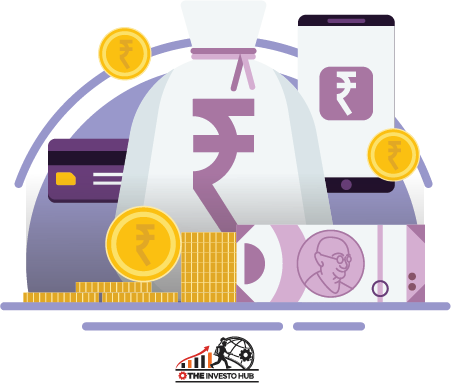
Table of Contents
Why CDs Still Matter in 2025
Certificates of Deposit (CDs) continue to be a reliable and low-risk way to grow your savings, even in today’s dynamic economic landscape. With the Fed’s interest rate strategy stabilizing and inflation trends cooling, CD rates have become more attractive. In May 2025, some financial institutions are offering rates as high as 4.50% APY — a compelling option for savers looking for fixed returns.
Top CD Rates for May 2025: Highest APYs Available Now
Based on the latest data from trusted financial sources like Investopedia and Bankrate, here are the most competitive CD rates for May 2025:
Note: Rates are current as of May 1, 2025, and are subject to change. Always check the bank’s website for the most recent rates.
| Bank/Credit Union | Term | APY | Minimum Deposit | FDIC/NCUA Insured |
|---|---|---|---|---|
| PonceBankDirect | 3 months | 4.50% | $500 | Yes |
| Nuvision Credit Union | 4 months | 4.50% | $1,000 | Yes |
| My Banking Direct | 6 months | 4.50% | $2,500 | Yes |
| Elements Financial | 12 months | 4.50% | $500 | Yes |
| XCEL Federal Credit Union | 18 months | 4.50% | $1,000 | Yes |
| Lafayette Federal Credit Union | 5 years | 4.28% | $500 | Yes |
| Capital One | 24 months | 4.35% | $0 | Yes |
| Barclays | 12 months | 4.30% | $0 | Yes |
| Marcus by Goldman Sachs | 6 months | 4.25% | $500 | Yes |
Why CD Rates Are Attractive in May 2025
Several macroeconomic and institutional factors are contributing to higher CD yields:
Federal Reserve Monetary Policy: The Fed has maintained a pause in interest rate hikes, but banks are still aggressively competing for deposits — especially smaller and online banks, which offer higher APYs.
Cooling Inflation: Inflation has slowed to an annualized rate near 2.1%, meaning real returns on CDs are higher compared to 2022–2023 when inflation outpaced deposit earnings.
Uncertainty in the Stock Market: With market volatility returning due to global geopolitical tensions and mixed earnings reports, more investors are looking for safe-haven assets like CDs.
Increased Consumer Savings: Households are showing renewed interest in saving, especially following the pandemic recovery period. CDs offer stability and peace of mind.
Rise of Online Banking Platforms: Digital banks and credit unions are able to offer better yields by operating with lower overhead costs.
How to Choose the Right CD for Your Needs
Not all CDs are created equal, and the right option depends heavily on your financial goals and timeline. Here’s what to consider:
1. Term Length
-
Short-term CDs (3 to 12 months): Ideal for people who may need liquidity in the near future.
-
Mid-term CDs (12 to 24 months): Good compromise between rate and accessibility.
-
Long-term CDs (3 to 5 years): Provide the highest APY but lock up your money longer.
2. Liquidity and Early Withdrawal Penalties
-
Most banks impose penalties for withdrawing before maturity.
-
These penalties typically range from 3 to 12 months of interest.
-
If you expect to need the funds, consider a no-penalty CD.
3. Minimum Deposit Requirements
-
Some banks allow CD openings with as little as $0 to $500.
-
Others require $1,000 to $2,500. Make sure this aligns with your cash flow.
4. Interest Payment Frequency
-
Some institutions let you receive monthly interest payments, which can be useful for retirees.
-
Others compound interest until maturity.
5. Type of Financial Institution
-
Online banks often offer the highest rates.
-
Credit unions may offer higher rates but might require membership.
-
Brick-and-mortar banks tend to offer convenience over returns.
Tips to Maximize Your CD Earnings
Here are actionable tips to ensure you’re getting the most out of your CD investment:
Build a CD Ladder: Divide your money into multiple CDs with staggered maturity dates. This way, you benefit from both short-term access and long-term higher yields.
Lock in High Rates Quickly: CD rates can change overnight. Once you find a great rate that fits your needs, open the account promptly.
Use Promotions and Bonus Offers: Some banks offer bonus APYs for first-time customers.
Diversify Your Holdings: Consider opening CDs at multiple institutions to stay under FDIC insurance limits and benefit from different terms.
Reinvest Strategically: When a CD matures, reassess your needs and shop for current best rates instead of automatically renewing.
Best Institutions for High-Yield CDs in 2025
Here are standout banks and credit unions with consistently competitive offerings:
My Banking Direct: Known for market-topping short-term CD rates.
PonceBankDirect: Often ranks highest for 3- to 6-month CDs.
Elements Financial: Offers both high rates and low deposit requirements.
Lafayette Federal Credit Union: Excellent long-term rates with solid member benefits.
Capital One & Ally: Reputable names with easy online application and no minimum deposit.
Understanding CD Laddering: Strategy for Steady Returns
CD laddering is a way to manage interest rate risk and improve liquidity. Here’s how it works:
Split your total investment across CDs of varying maturities — for example: 1-year, 2-year, 3-year, 4-year, 5-year.
Every year, one CD matures, which you can either reinvest or use depending on your financial needs.
Over time, you achieve the benefit of long-term rates while maintaining some annual liquidity.
Example Laddering Plan:
Year 1: $5,000 in 1-year CD at 4.25%
Year 2: $5,000 in 2-year CD at 4.35%
Year 3: $5,000 in 3-year CD at 4.40%
Year 4: $5,000 in 4-year CD at 4.45%
Year 5: $5,000 in 5-year CD at 4.50%
When the 1-year CD matures, roll it into a new 5-year CD at current rates. Repeat annually.
Pros and Cons of Investing in CDs in 2025
Pros:
-
Fixed, predictable returns — no surprises.
-
FDIC or NCUA insured — up to $250,000 per depositor.
-
Simple to manage — no active trading or monitoring needed.
-
Higher APYs — better than most savings or checking accounts.
Cons:
-
Limited liquidity — your money is locked up.
-
Penalty risk — withdrawing early can erase gains.
-
Interest rate risk — if market rates rise, your locked-in CD might underperform.
Frequently Asked Questions (FAQs)
Q1: Are CD rates expected to rise in 2025?
A: Analysts predict that rates will plateau or begin to taper slightly in late 2025. Right now may be one of the best opportunities to lock in high rates.
Q2: What happens if I withdraw early?
A: Early withdrawals can cost you a portion of your earned interest — usually 3 to 6 months’ worth, depending on your term.
Q3: Are online banks and credit unions safe for CDs?
A: Yes, as long as they’re insured by the FDIC (for banks) or NCUA (for credit unions), your deposits are safe up to $250,000 per institution.
Q4: Can I add more money to my CD after opening?
A: Generally, no. CDs are structured products — if you want to deposit more, you’ll need to open a new one.
Q5: What’s the difference between a CD and a high-yield savings account?
A: CDs have fixed terms and rates, with penalties for early withdrawal. High-yield savings accounts offer more flexibility, but rates can change anytime.

